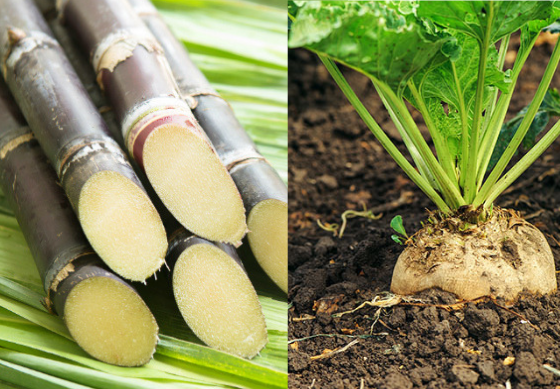Some people prefer beet sugar vs cane sugar for its claimed health properties and purity.
Discovering the Distinctions being used and Advantages In Between Beet Sugar Vs Cane Sugar
In the cooking globe, the option in between beet sugar and cane sugar is not simply concerning sweet taste however entails a nuanced factor to consider of flavor, application, and influence. While both sugars stem from various plants, each goes through unique manufacturing processes that subtly affect their attributes and viability for numerous recipes.
Beginnings and Production Processes of Beet and Cane Sugar

Walking stick sugar, on the other hand, comes from the sugarcane plant, a tropical turf indigenous to Southeast Asia and now cultivated in tropical areas worldwide. The manufacturing of cane sugar begins with the harvesting of cane stalks, which are squashed to release the juice. This juice is then boiled to focus it, after which it is rotated in centrifuges to generate raw sugar crystals. These crystals are additional refined to generate the white sugar typically readily available in shops.

Nutritional Content and Wellness Considerations

When contrasting the dietary content of beet sugar and cane sugar, it becomes evident that both kinds essentially offer the same calorie worths, with about 16 calories per teaspoon and no considerable nutrient diversity. Each is made up almost totally of sucrose, which is a straightforward carbohydrate that uses quick power yet does not have vitamins, minerals, or fiber. This similarity reaches their influence on health, especially concerning blood sugar levels. Both sugars, when consumed over, can contribute to elevated blood sugar levels, a risk element for diabetes mellitus and various other metabolic problems. Additionally, too much consumption can cause weight gain and dental problems, as both sugars are just as cariogenic, advertising dental caries. From a health and wellness perspective, moderating consumption of any type of sort of sugar, whether from beet or cane, is a good idea to stay clear of these possible negative effects on well-being. Therefore, neither holds a distinct benefit over the various other in regards to health advantages.
Taste Profiles and Culinary Applications
Regardless of their similar chemical structures, beet sugar and cane sugar vary discreetly in taste, which can affect their use in different cooking contexts. Cane sugar frequently lugs a hint of molasses, also in its polished form, offering a warm, caramel-like touch that enhances baked items, More Bonuses coffee, and chocolate-based recipes. On the various other hand, beet sugar is defined by its highly refined, neutral preference, making it a versatile sugar that does not change the taste profiles of meals.
Ecological Impact and Sustainability
While both beet and cane sugars are stemmed from plants, their environmental effects differ substantially as a result of the distinctive approaches of growing and handling needed for every. Sugar beet growing commonly includes substantial automation, which can boost nonrenewable fuel source intake and carbon discharges. Nevertheless, beets can be expanded in cooler environments visit this site right here and need less irrigation, possibly lowering water use compared to sugarcane. Sugarcane, on the various other hand, is commonly expanded in tropical areas where it counts greatly on irrigation and a much longer growing duration, enhancing its water footprint.
Additionally, the processing of sugarcane usually creates a significant quantity of waste, including bagasse, which, although useful as biofuel, frequently adds to air pollution if melted inefficiently. Sugar beet processing makes use of more of the raw products, leading to much less waste. Both industries encounter challenges in lowering their environmental impacts, but continuous innovations in agricultural techniques and waste administration are intending to enhance sustainability.
Economic Factors Influencing the Sugar Market
The financial dynamics of the sugar industry are considerably affected by international market needs and profession policies. Elements such as tariffs, subsidies, and worldwide profession arrangements play crucial functions fit the affordable landscape. In regions where sugarcane or sugar beet production is subsidized, producers may have a financial advantage click here to find out more that enables them to provide lower prices on the global market. This can create disparities in success and market gain access to for producers in countries without such subsidies.
Furthermore, fluctuations in global need for sugar, affected by dietary trends and commercial usage in food, directly influence rates and manufacturing levels. beet sugar vs cane sugar. Weather problems likewise play a critical role, as they can significantly influence crop yields and, subsequently, the supply chain. This variability introduces a degree of economic uncertainty that can bring about investment volatility in sugar production fields, influencing decisions from growing to market technique
Conclusion
Finally, both beet and cane sugar have special qualities that match different cooking requirements. While cane sugar imparts an abundant flavor perfect for enhancing baked items, beet sugar's neutrality is excellent for lighter meals. Nutritional similarities regardless of, their distinct manufacturing processes and ecological impacts add intricacy to the option in between them. Therefore, recognizing these differences aids chefs and customers make informed choices that line up with their health and wellness, cooking, and ethical choices.